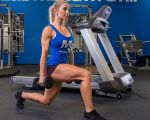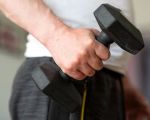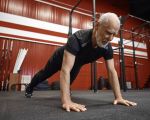- 1-Importance-of-proper-recovery
- 2-Nutrition-for-recovery
- 3-Rest-and-active-recovery
- 4-Additional-techniques-to-boost-recovery
1. The Importance of Proper Recovery After Intense Workouts
After pushing your body through an intense workout, recovery is just as crucial as the exercise itself. Proper recovery helps muscles repair, reduces fatigue, and prepares your body for future training sessions. Skipping or neglecting recovery can lead to overtraining, increased injury risk, and diminished performance.
Understanding recovery is not only about resting but also about how you support your body’s natural healing processes. For instance, many athletes and fitness enthusiasts underestimate the power of well-planned recovery routines, which include nutrition, rest, and other supportive practices.
One inspiring story comes from a marathon runner who dramatically improved her race times simply by prioritizing recovery days and hydration, showing how vital this phase is beyond just working hard.
2. Nutrition Strategies That Support Muscle Repair and Recovery
2.1 Importance of Protein and Carbohydrates
After an intense workout, your muscles need protein to rebuild damaged fibers and carbohydrates to replenish depleted glycogen stores. Consuming a balanced meal or snack within 30 to 60 minutes post-exercise optimizes recovery. Lean meats, dairy, eggs, and plant-based proteins like beans and lentils provide essential amino acids for muscle repair.
2.2 Hydration and Electrolyte Balance
Hydration plays a pivotal role in recovery. Sweating during exercise leads to fluid and electrolyte loss, which must be replenished to maintain optimal muscle function and prevent cramps. Drinking water and incorporating electrolyte-rich beverages can help restore balance efficiently.
A case in point involves a fitness trainer who shared how clients who neglected hydration experienced prolonged soreness and fatigue, reinforcing the value of consistent fluid intake.
3. Rest and Active Recovery Techniques for Enhanced Healing
3.1 Prioritizing Sleep Quality
Quality sleep is perhaps the most powerful recovery tool available. During deep sleep stages, your body releases growth hormones that facilitate muscle repair and overall recovery. Establishing a regular sleep routine can significantly enhance workout benefits.
3.2 Incorporating Active Recovery
While rest is important, incorporating active recovery methods like light walking, yoga, or gentle cycling promotes blood circulation and speeds nutrient delivery to muscles. This approach reduces stiffness and accelerates healing without overloading fatigued muscles.
From my own experience, integrating yoga sessions post-intense workouts helped me overcome stubborn muscle soreness and improved flexibility.
4. Additional Techniques to Boost Recovery After Intense Workouts
4.1 Foam Rolling and Massage Therapy
Self-myofascial release using foam rollers or professional massage can break down muscle knots, improve circulation, and reduce delayed onset muscle soreness (DOMS). These techniques complement rest and nutrition by actively addressing muscle tightness.
4.2 Cold and Heat Therapy
Alternating between cold packs and heat therapy can help reduce inflammation and promote healing. Cold therapy is effective immediately post-workout to minimize swelling, while heat improves blood flow during later recovery stages.
4.3 Mindfulness and Stress Reduction
Stress negatively impacts recovery by elevating cortisol levels, which can hinder muscle repair. Incorporating mindfulness practices such as meditation or breathing exercises supports hormonal balance and overall well-being.
Recovering properly after intense workouts is key to sustaining progress and preventing burnout. For those seeking tailored recovery products or professional advice, Fitness offers a curated selection of items and expert support to help you maximize your recovery and performance.








